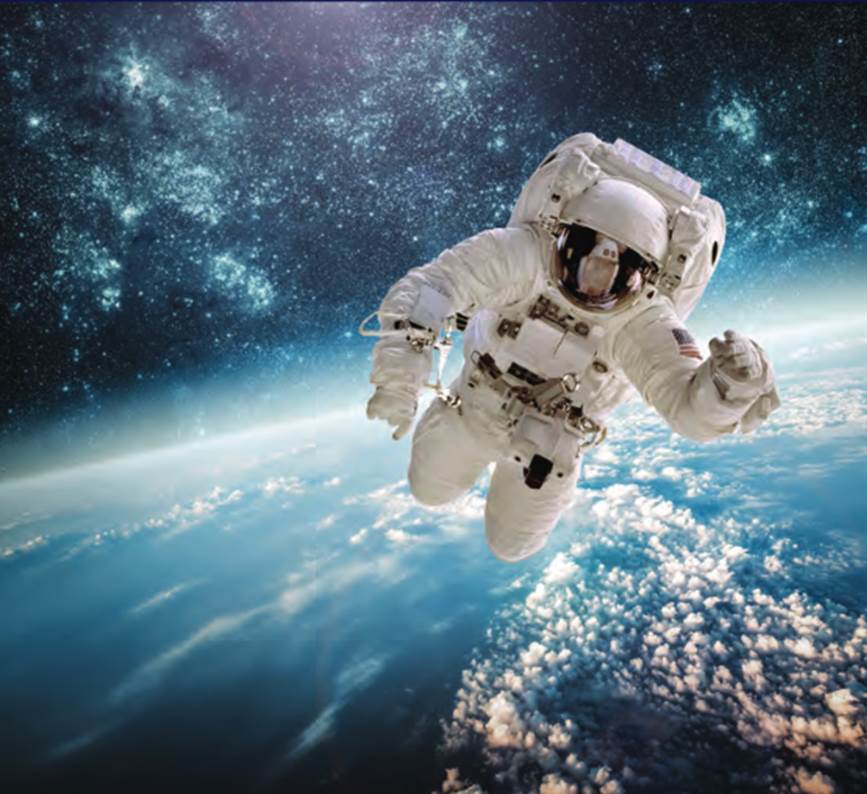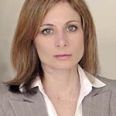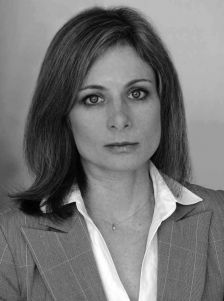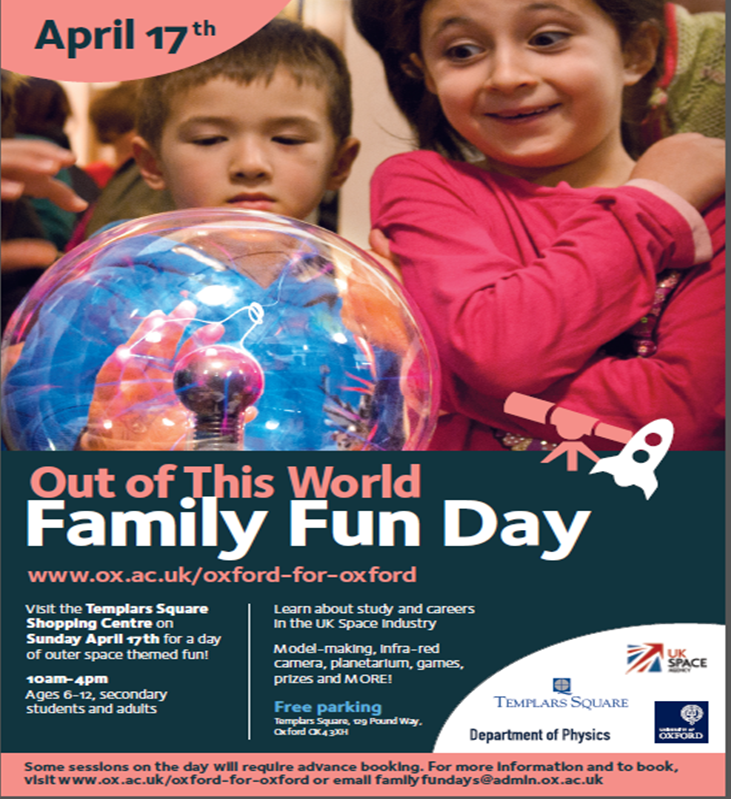Public Outreach
Oxfordshire Science Festival: Space Days


More information and booking through the festival website: http://www.oxfordshiresciencefestival.com/space-day.html
4 May 2016
56th Cherwell-Simon Lecture, Prof Lisa Randall "Dark Matter and the Dinosaurs: The Astounding Interconnectedness of the Universe".

The 56th Cherwell-Simon Lecture will be delivered by Prof Lisa Randall, Frank B Baird Jr, Professor of Science, Harvard University at 16:30 on Friday 13 May 2016.
Title: "Dark Matter and the Dinosaurs: The Astounding Interconnectedness of the Universe".
Prof Randall will explore a speculative hypothesis in which the comet that may have triggered the mass extinction of dinosaurs was dislodged from the Oort cloud at the edge of our solar system by a disk of dark matter.
56th Cherwell-Simon Lecture 2016 - Professor Lisa Randall, "Dark Matter and the Dinosaurs: The Astounding Interconnectedness of the Universe"

Title: Dark Matter and the Dinosaurs: The Astounding Interconnectedness of the Universe
Professor Lisa Randall, Frank B. Baird Jr. Professor of Science, Harvard University will deliver Oxford Physics 56th Cherwell-Simon Lecture. She will explore a speculative hypothesis in which the comet that may have triggered the mass extinction of the dinosaurs was dislodged from the Oort cloud at the edge of our solar system by a disk of dark matter.
Related Research
Olivia Hawkes
email: olivia.hawkes@physics.ox.ac.uk
Tel: (01865) 272225
The Physics of Fine Tuning - 3rd Workshop - Stars, Galaxies and the Multiverse

The 3rd Workshop in the Physics of Fine Tuning - Stars, Galaxies, and the Multiverse will be held in Trinity College on Thursday 12th May 2016 from 14:00 - 16:00.
Speakers:
John Peacock (Edinburgh)
Observer Selection and Fine-Tuning Puzzles in Cosmology
Joe Silk (Oxford, IAP; John Hopkins)
The Limits of Cosmology
Adrianne Slyz (Oxford)
How do Galaxies know when, where and how quickly to form stars?
Leanne O'Donnell
01865 613 973
Leanne.odonnell@physics.ox.ac.uk
The 12th Hintze Lecture
The 12th Hintze Lecture will be delivered by Professor Robert Kennicutt, Plumian Professor of Astronomy and Experimental Philosophy, Institute of Astronomy, University of Cambridge.
Title: Unveiling the Birth of Stars and Galaxies
Leanne O'Donnell
01865 613 973
Leanne.odonnell@physics.ox.ac.uk
Investigating the origins of magnetic fields using the largest laser on Earth

Dr Jena Meinecke
The largest laser on Earth, at the National Ignition Facility (California), is to be used to recreate scaled astrophysical conditions and answer the question: What is the origin of magnetic fields in our universe?

Photo credit: Damien Jemison/LLNL
To book places for the talk please complete our short online form: https://www.surveymonkey.co.uk/r/89P26Y6
For more information please contact: public.events@physics.ox.ac.uk
Out of this World


Some sessions on the day will require advance booking. For more information and to book,
visit www.ox.ac.uk/oxford-for-oxford or email familyfundays@admin.ox.ac.uk
Hurricanes and Climate Change

Oxford Climate Research Network Annual Lecture
In conjunction with the Met Office Academic Partnership

Professor Kerry Emanuel (MIT)
In his talk, Kerry will explore the pressing practical problem of how hurricane activity will respond to global warming, and how hurricanes could in turn be influencing the atmosphere and ocean.
For further information and to reserve a place go to: http://oxfordclimatenetwork2016.eventbrite.co.uk
Final Dennis Sciama Memorial Lecture
The Final Dennis Sciama Lecture will be delivered by Professor David Deutsch FRS on Thursday 3rd March 2016 @ 17:30 in the Martin Wood Lecture Theatre.
Leanne O'Donnell
Leanne.odonnell@physics.ox.ac.uk
01865 613973
The light fantastic - a tour of the electromagnetic spectrum

Humans are able to view the world in all the colours of the rainbow - but there are far more colours that we can't see. From insects using ultraviolet light to see patterns on flowers to snakes detecting their prey using thermal infrared, other types of light can reveal unseen detail all around us. Scientists use satellites to measure these other types of light to observe the Earth and the way it is changing around us. This demonstration lecture will explore these methods, as well as the properties of light itself, in a whistle stop tour of the spectrum.


